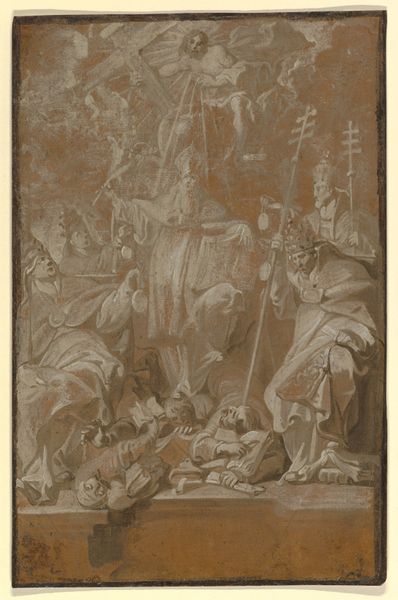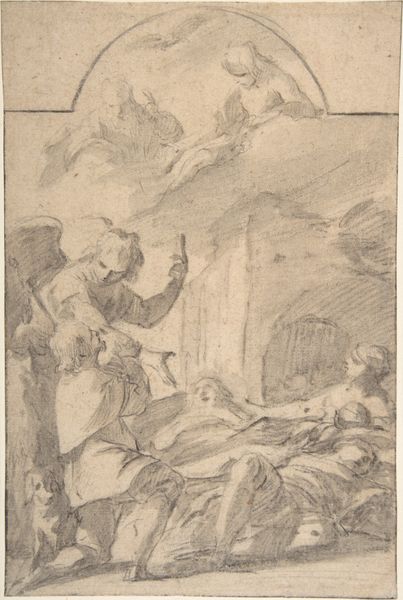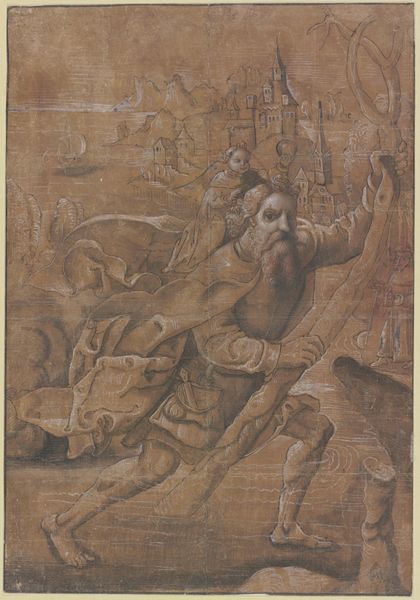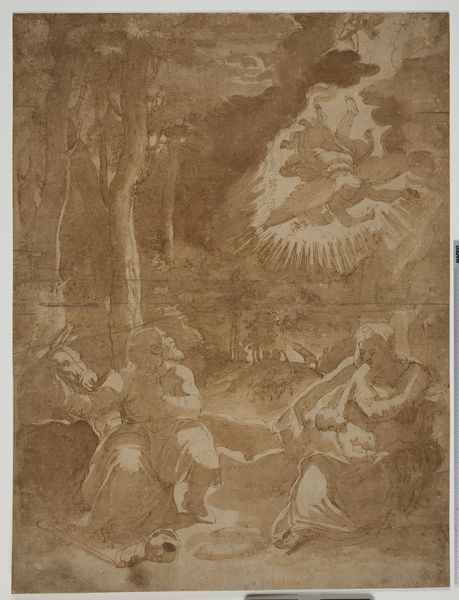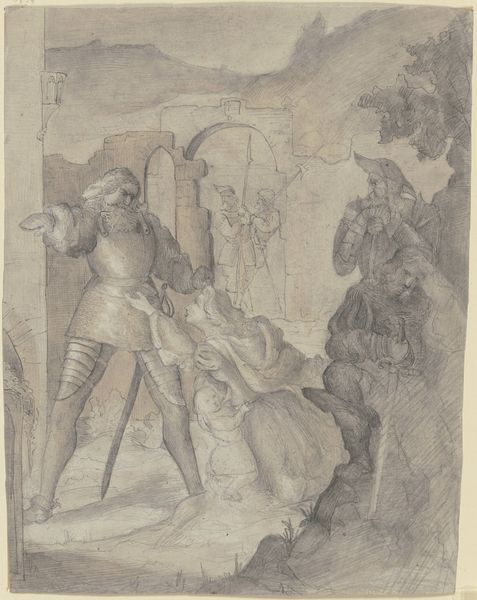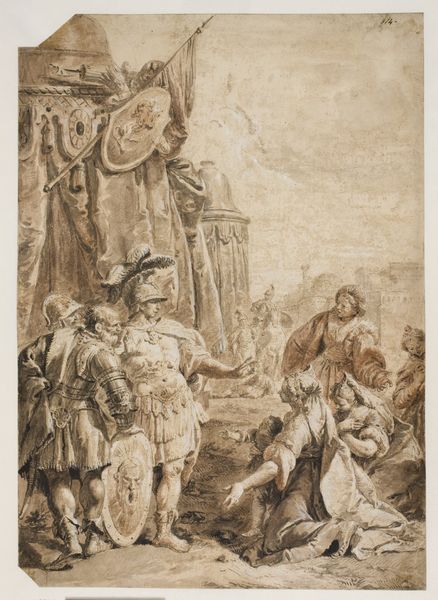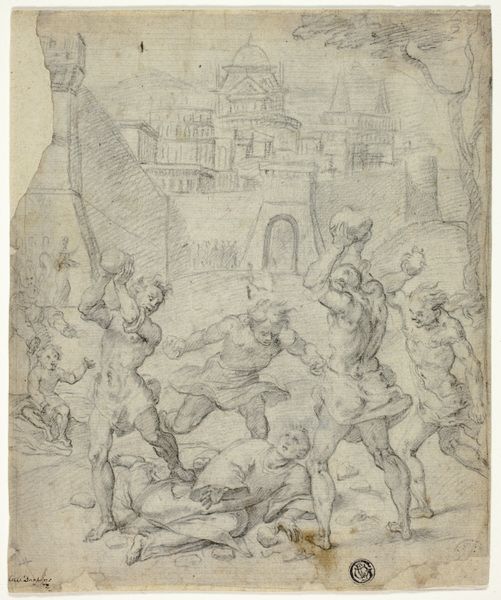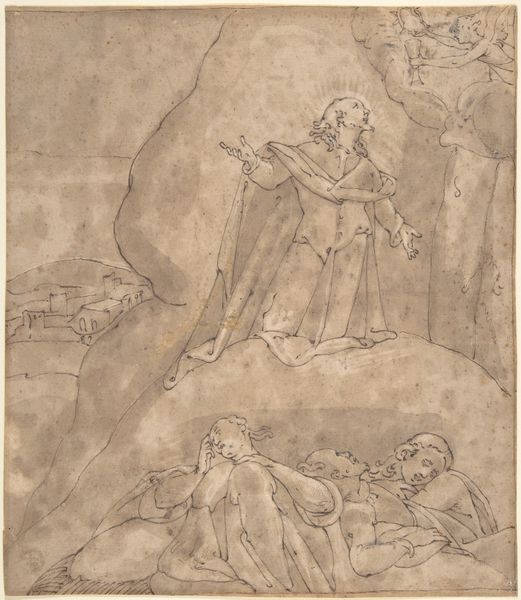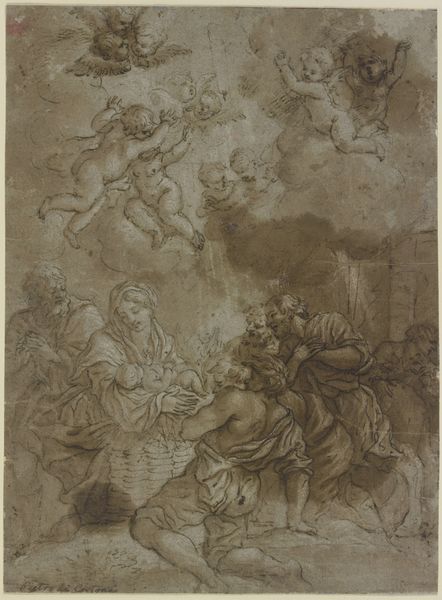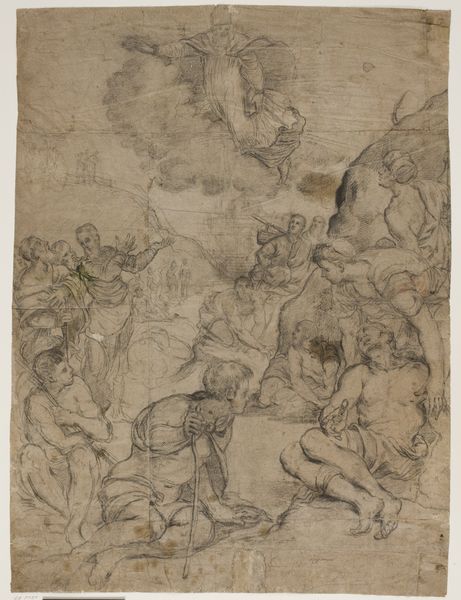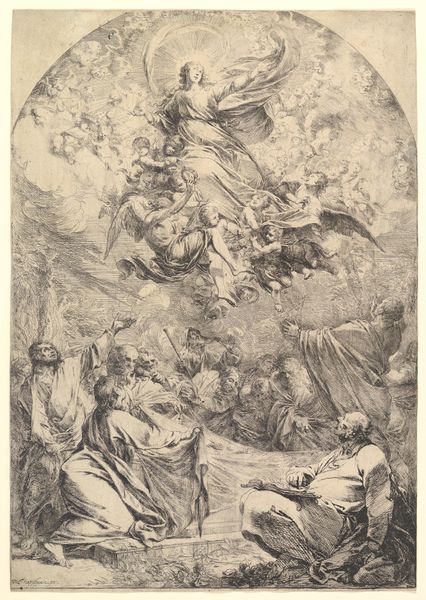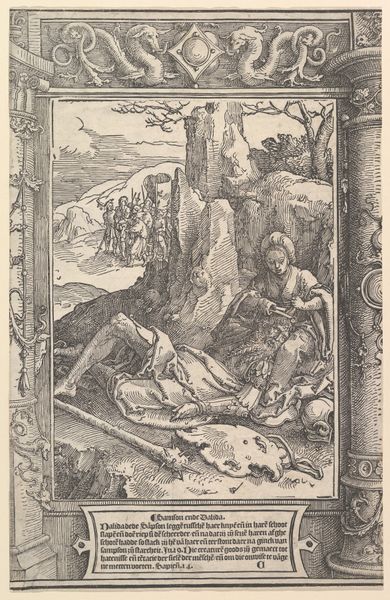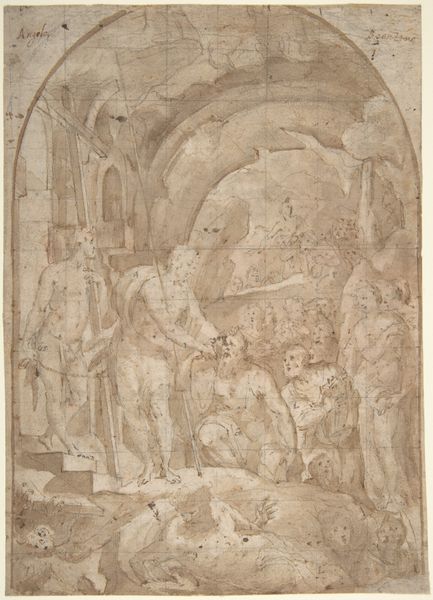
Alexander Farnese Directing the Siege of Antwerp c. 1580s
0:00
0:00
drawing, paper, ink
#
drawing
#
narrative-art
#
mannerism
#
figuration
#
paper
#
charcoal art
#
oil painting
#
ink
#
history-painting
Dimensions: 17 3/8 x 13 7/8 in. (44.13 x 35.24 cm) (sight)29 3/4 x 23 3/4 in. (75.57 x 60.33 cm) (outer frame)
Copyright: Public Domain
Curator: What a dramatic drawing! The scene feels urgent, the figures caught in dynamic poses. Editor: Indeed. We’re looking at "Alexander Farnese Directing the Siege of Antwerp," a drawing made circa the 1580s by Ludovico Carracci. It's currently housed at the Minneapolis Institute of Art. Curator: Carracci really captures the tension of conflict. I see the leader pointing, seemingly issuing orders amidst the chaos, and others are already engaged in battle. The sepia tones create this sense of faded grandeur. Editor: Exactly. The strategic importance of Antwerp at that time cannot be overstated; it was the epicenter of trade in Europe. Carracci highlights the military and political strategy enacted by Farnese in the battle for power in the region. Notice the background? He provides just enough detail to communicate a sense of landscape and of fortified structures. Curator: I notice, too, that the artist makes some compositional choices that heighten the drama. The foregrounding of suffering figures definitely evokes pathos for those caught in battle. Editor: The contorted poses certainly contribute to that. Looking at his technique, the quick strokes of ink and the washes of sepia are used to create volume but, in other areas, figures are merely sketched, creating a sense of unfinished business, of transition. Curator: The lack of clarity in some sections reminds me that art often functioned as propaganda in those times. Showing a glorious victory was crucial. By framing the siege, it shaped perceptions of power and reinforced Farnese’s authority in a fraught political landscape. Editor: Precisely. He seems very forward, his stance quite assertive as he directs the scene. I appreciate the formal structure and how that sense of dramatic conflict emerges. Carracci makes a strong statement through the contrast of light and shadow as well. Curator: Agreed. The dynamic interplay between light and shadow serves not only to describe the scene but to express the emotional turmoil inherent in this particular historical moment. It underscores how historical events are not simply factual records, but experiences molded and conveyed. Editor: Well said! It makes one reconsider our own perception and understanding of history itself when viewing a piece so potent and evocative. Curator: I concur; it provides valuable insight into art's role in mediating social narratives and solidifying power structures during times of war.
Comments
No comments
Be the first to comment and join the conversation on the ultimate creative platform.
